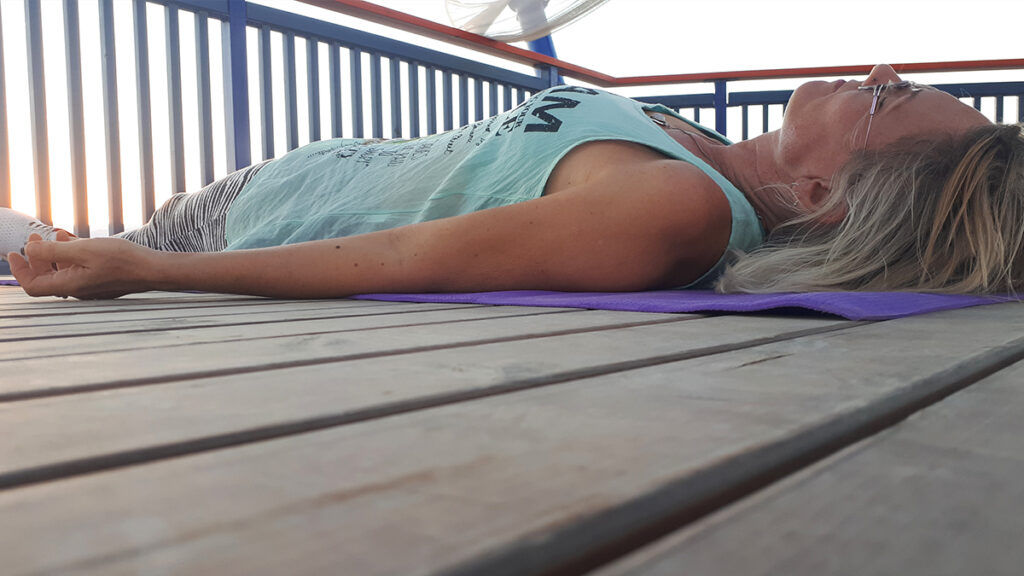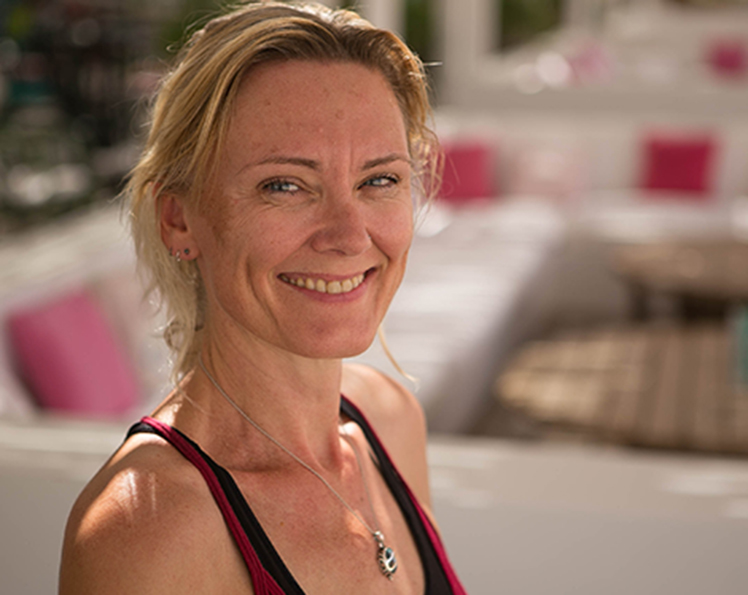We all know that taking time to rest and relax is healthy for us. The only thing is, if you have a busy life, it can sometimes falls through. Practicing savasana can help you take this time for yourself. In addition, this pose offers so many more benefits than just feeling wonderfully relaxed. But be aware, this pose can be more challenging than it looks.
In short, what is savasana?
The Savasana is a yoga pose, also known as the corpse pose or corpse position. And is often practiced at the end of a class. But of course you can also perform it any time at home, for example at the end of the day.
With savasana you learn to consciously relax while staying alert to what is happening and that you can let go with attention; Mentally and physically.
In my previous blog How do you do Savasana, for relaxation and stress release?, you read more about how to perform this exercise and what can help you during practice.
And like anything, the more you practice, the better you get at it.
Benefits of Savasana:
Besides being able to completely relax during the pose itself, which you hold for around 10-20 minutes, the pose has more advantages. In the short term but also for the long term.
1. Savasana helps you lead a healthier lifestyle.
Practicing Savasana or meditation, combined with slow deep breathing, helps you to reduce stress, calm your nervous system and think more clearly.
And with a calm clear mind, you also become more aware of your own unhealthy habits.
You can make changes from consciousness. And also support you that these changes will also be permanent.
2. Creates deep breathing.
When you are deeply relaxed, your breathing also becomes deeper and slower. If you (often) have high and shallow breathing in your daily life, it can take some practice to get a deep belly breathing during savasana. If this is difficult, you can place your hands on your stomach and try to make contact with the warmth of your hands. This helps to get breathing lower.
With regular good and slow breathing, it also becomes easier to do this during daily activities.
3. Reducing Long-Term Tension and Stress, Anxiety and Fear
By regularly consciously relaxing and breathing well, long-term tension and stress can be reduced. In the case of panic or fear, for example, it helps you to focus and relax and reconnect with your body.
4. Gives a clear mind
With a clear calm head, good ideas, the most creative things and the nicest hunches come more easily. Often there are better conversations, and there is, for example, more space for (self-) insights.
5. Savasana decreases your blood pressure
High blood pressure can be caused by several factors, including stress. If you have high blood pressure, you risk a number of serious health conditions, like a stroke and heart disease. Taking time to slow down, relax completely and deepen your breathing during Savasana can help decrease your blood pressure.
6. Savasana reduces your heart rate
High level of stress and tensions can also increase your heart rate, but so can caffeine, alcohol and certain health conditions. The relaxation options and slow breathing techniques that savasana offers, can help reduce your heart rate.
7. Savasana allows your heart to rest
Deep breathing ensures that important organs of the body are properly in action, such as the lungs. Deep good breaths forces your lungs to work more than they normally do throughout the day. And it brings more oxygen to your blood, which are then get sent to the heart. With your lungs work a little harder, it eases the pressure needed by the heart to pump oxygen through your body. This gives the heart a little more rest, making both your lungs and heart more efficient during your daily activities.
8. Savasana functions as a muscle relaxant
Relaxing your muscles not only helps you when you are tense, but also, for example, if you have back problems or pain elsewhere. Sometimes we unconsciously tense muscles, which is not necessary at all, or we compensate with muscles to deal with another pain.
9. Improving your sleep.
Practicing Savasana before going to sleep can make it easier to fall asleep and improves the quality of sleep itself.
10. Letting go of (old) emotions and pain
When you are completely relaxed, all kinds of emotions can arise. The pose itself, with arms wide and heart and lungs open, can leave you feeling vulnerable. Savasana is also about surrender. And then all kinds of things can suddenly surface: Thoughts, feelings and sometimes some tears. If this happens to you, know that it happens quite often. Just try to let it be. Tears can be a form of letting go.
Savasana: the most easy or difficult pose in yoga!?
It seems the easiest pose: just lie on the floor, relax nicely after a class.
However, it is listed as one of the most difficult asanas. This pose can challenge you in ways that you are not used to being challenged. Like patience, complete acceptance of oneself and control of the mind.
True relaxation can be harder than it looks. Especially when you start practicing Savasana; you can’t relax your body or your head appears to be to active, or you just fall asleep.
Doing this exercise regularly will help you release stress faster and more easily, and make you feel better physically and emotionally.
Briefly the difference between Savasana, Meditation and Yoga Nidra
While there are differences between these 3 forms, they are also somewhat similar and overlap.
In brief:
Savasana is an asana, a posture where you lie on the floor.
Yoga nidra is a state of consciousness, somewhere between sleeping and waking. You usually lie in Savasana pose and there is complete relaxation of the body, while the mind remains awake.
With regular practice of savasana, one can experience yoga nidra.
Quite simply, meditation is the practice of becoming aware of your own thoughts and being aware of what is going on at that moment. You almost always do this in a sitting position with your eyes closed. But you can also do meditation lying down.
Perhaps unnecessarily to mention, but if you suffer from very low blood pressure, or if you have any other medical condition, always consult your doctor. This information is not intended to be a substitute for professional medical advice, diagnosis or treatment.
Hi, my name is Jolinda, and I work as a massage and Reiki therapist, happiness coach and provide yoga and meditation classes.
With my blogs I hope to inspire you to make positive changes into your life. For more ideas and tips check out my page Jolindas inspiration. Free trainings and videos you can find at free downloads and videos
Would you like to be kept informed and inspired? Then sign up for my newsletter.

